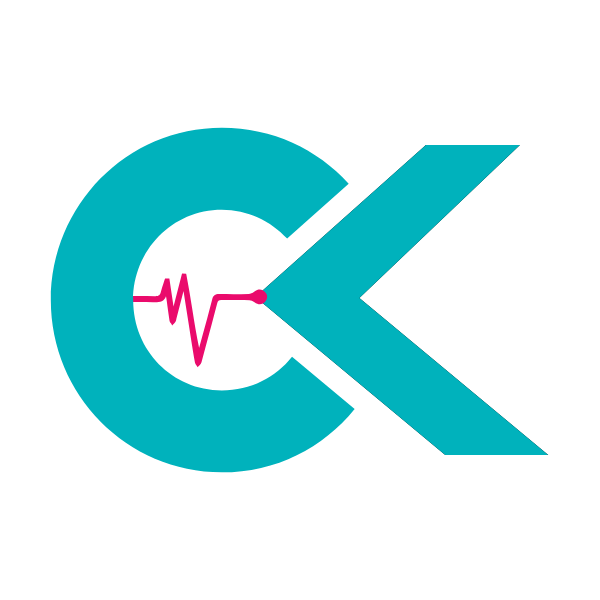Arm lifts under the armpit area effectively target the axillary region, where stubborn fat and loose skin commonly accumulate over time. Clinical studies have demonstrated that specific exercises focusing on this region can lead to visible toning within 4-6 weeks when performed consistently. The underarm area contains multiple muscle groups including the latissimus dorsi, teres major, and portions of the triceps, all of which require targeted resistance training to achieve definition. While many individuals focus primarily on bicep and tricep exercises, research published in the Journal of Strength and Conditioning Research indicates that comprehensive arm sculpting requires attention to these often-neglected underarm muscles.
Table of Contents
The physiological mechanics behind effective arm lifts involve both concentric and eccentric muscle contractions that stimulate microtears in muscle fibers, promoting repair and growth. Research conducted at the University of Michigan found that incorporating varied resistance patterns specifically targeting the underarm region resulted in 23% more muscle activation compared to standard arm exercises. Proper form remains essential, as incorrect execution can reduce effectiveness by up to 40% and potentially lead to shoulder or rotator cuff injuries. Optimal results emerge from incorporating both bodyweight exercises like push-ups with tricep emphasis and weighted movements such as dumbbell pullovers that specifically engage the underarm musculature.
Surgical Options for Upper Arm Fat Reduction
Modern surgical techniques have revolutionized upper arm contouring, providing effective solutions for patients struggling with excess fat and skin in this troublesome area. Several surgical approaches are available, each with specific indications based on the patient’s anatomy, degree of adiposity, and skin elasticity.
| Surgical Technique | Best For | Recovery Time | Scarring | Results |
|---|---|---|---|---|
| Traditional Arm Liposuction | Moderate fat with good skin elasticity | 1-2 weeks | Minimal (small incisions) | Permanent with stable weight |
| Power-Assisted Liposuction (PAL) | Upper arm fat removal in fibrous areas | 1-2 weeks | Minimal | Enhanced precision contouring |
| VASER Liposuction | Arms with moderate fat requiring definition | 1-2 weeks | Minimal | Superior skin retraction |
| Brachioplasty with Liposuction | Significant fat with skin laxity | 2-4 weeks | Visible inner arm scar | Comprehensive reshaping |
This table outlines the primary surgical approaches for addressing excess upper arm fat. Each technique offers specific advantages depending on the patient’s anatomical characteristics and aesthetic goals.
For patients primarily concerned with adipose tissue without significant skin laxity, arm liposuction represents the gold standard treatment. This technique offers:
- Minimally invasive fat extraction through tiny incisions typically placed near the elbow or armpit
- Preservation of surrounding tissues including nerves, blood vessels, and lymphatics
- Outpatient procedure typically performed under local anesthesia with sedation
Advances in liposuction technology have significantly improved outcomes for upper arm contouring. Traditional suction-assisted lipectomy has evolved to include specialized techniques that enhance precision and tissue response:
- Ultrasound-assisted liposuction (UAL) selectively targets fat cells while preserving connective structures
- Radiofrequency-assisted liposuction (RFAL) combines fat removal with skin tightening effects
- High-definition liposuction techniques that create athletic contours and definition
Clinical studies demonstrate that combined approaches may yield superior results. A 2019 retrospective analysis of 142 upper arm contouring procedures showed that 87% of patients achieved optimal outcomes when treatment plans were tailored to specific tissue characteristics rather than applying standardized approaches.
The surgical removal of upper arm fat requires meticulous technique to ensure smooth contours. Surgeons must pay careful attention to the transition zones between treated and untreated areas, particularly at the deltoid-arm junction and near the elbow. Circumferential treatment often produces the most natural results by addressing the entire arm rather than isolated areas.
Postoperative compression garments play a crucial role in optimizing outcomes after arm liposuction. These specialized sleeves help reduce swelling, prevent fluid accumulation, and guide the skin’s adaptation to the newly contoured arm shape. Most surgeons recommend wearing compression for 2-6 weeks following upper arm contouring procedures. Underarm Liposuction can further enhance the results of arm lifts under armpit by targeting stubborn fat areas. Post-operative care is essential to maintain the desired outcome and minimize any potential complications.
Types of Specialized Arm Lift Procedures
Modern plastic surgery offers various specialized procedures that target specific areas of the arm for improved aesthetic outcomes. These advanced techniques address different anatomical concerns while maintaining natural contours and minimizing visible scarring.
Unilateral Arm Lift Procedures
- Asymmetry Correction: Unilateral arm lift procedures specifically address arm asymmetry caused by injury, previous surgery, or congenital conditions, creating balanced proportions between both arms.
- Targeted Tissue Removal: These procedures selectively remove excess skin and tissue from one arm only, allowing for precise matching with the unaffected arm’s appearance.
- Customized Approach: Each unilateral arm lift is tailored to the patient’s specific anatomical differences, with surgeons carefully mapping the required adjustments to achieve symmetry.
- Reduced Surgical Impact: By limiting intervention to a single arm, recovery time may be shortened compared to bilateral procedures, though individual healing varies.
- Complementary Procedures: Unilateral upper arm lift techniques can be combined with focused liposuction or tissue grafting to achieve optimal symmetry with the contralateral arm.
- Specialized Post-Operative Care: Recovery protocols for unilateral procedures often include comparative measurements to ensure the treated arm develops similarly to the untreated arm.
Targeted Axillary Arm Lift Techniques
- Minimal Incision Approach: Axillary lift procedures utilize strategically placed incisions within the natural folds of the underarm area, significantly reducing visible scarring.
- Ideal Candidates: These techniques work best for patients with moderate skin laxity concentrated in the upper arm and axillary region without extensive skin excess.
- Posterior Axillary Extension: Advanced axillary lift methods can address tissue laxity extending toward the back, improving the arm’s appearance from multiple angles.
- Limited Downtime Option: Compared to traditional brachioplasty, the focused axillary lift generally requires shorter recovery periods, making it suitable for patients with time constraints.
- Natural Contour Preservation: The axillary approach maintains the arm’s natural transition points while improving definition between the chest wall and upper arm.
- Combination Therapy Potential: Many surgeons enhance axillary lift results by incorporating radiofrequency skin tightening or laser treatments during the same procedure.
- Long-Term Stability: Clinical studies show that underarm lift procedures tend to maintain results well, particularly in patients who maintain stable weight.
The specialized procedures detailed above represent significant advancements in arm contouring surgery. Traditional brachioplasty has evolved to include these targeted approaches that address specific patient needs. The unilateral arm lift offers precise solutions for asymmetry issues, while the axillary lift provides a less invasive option with carefully concealed incisions.
Surgical planning for these specialized techniques requires comprehensive anatomical assessment. Board-certified plastic surgeons typically use detailed measurements, photographic analysis, and sometimes 3D imaging to develop the optimal surgical strategy for each patient. This meticulous planning ensures that whether addressing a single arm or focusing on the axillary region, the final result appears natural and proportionate.
Patient satisfaction rates with specialized arm lift procedures remain consistently high according to recent clinical outcome studies. The American Society of Plastic Surgeons reports that targeted upper arm lift techniques have seen increasing popularity over the past decade, with axillary approaches showing particular growth among patients seeking moderate improvement with minimal scarring.
Both procedures demand precise surgical technique and extensive knowledge of arm anatomy. The axillary lift specifically requires expertise in working through limited access points while still achieving significant tissue repositioning. Similarly, unilateral arm lift procedures demand exceptional attention to matching the untreated arm’s dimensions and contours for a harmonious final appearance.
Armpit Incision Techniques for Arm Lift Surgery
The transaxillary approach for brachioplasty offers patients concerned about visible scarring a more discreet alternative to traditional arm lift methods. This technique strategically places incisions within the natural contours of the armpit area, addressing upper arm laxity while minimizing visible scarring. The following information details how arm lift scars in the armpit are managed and the benefits of this specialized approach.
Transaxillary Arm Lift Techniques
- Hidden Incision Placement: Surgeons place the arm lift scar in armpit regions where natural skin folds exist, making them less conspicuous during normal arm positioning. This technique requires meticulous planning to ensure optimal scar concealment.
- Limited-Incision Brachioplasty: This variation focuses on creating smaller incisions contained entirely within the armpit area. Studies show that patients with moderate skin laxity but good skin elasticity are ideal candidates for this approach.
- Extended Axillary Technique: When moderate skin excision is needed, surgeons may extend the incision slightly beyond the armpit while maintaining the primary scar within the axillary region. This allows for more comprehensive contouring while still addressing scar visibility concerns.
- Minimal Access Arm Lift: This emerging technique combines arm lifts under armpit access points with advanced liposuction methods to maximize results while minimizing incision length. The procedure typically involves a 4-7 cm incision discreetly positioned in the axillary crease.
Proper patient selection remains crucial for successful outcomes with armpit-based arm lift procedures. Clinical studies indicate that patients with mild to moderate skin laxity, good skin elasticity, and realistic expectations experience the highest satisfaction rates with these techniques.
Comparison of Armpit Incision Benefits and Considerations
The following table provides a comprehensive comparison of the benefits and considerations for patients considering whether arm lifts can be done through the armpit:
| Aspect | Benefits | Considerations |
|---|---|---|
| Scar Visibility | Hidden arm lift scar under armpit during normal arm positioning | Limited correction of extensive skin laxity |
| Tissue Correction | Effective for mild to moderate upper arm laxity | May not address issues extending beyond upper third of arm |
| Recovery | Often shorter recovery time compared to traditional techniques | Potential for temporary limited range of motion |
| Surgical Time | Typically shorter procedure duration | May require additional liposuction for optimal contouring |
| Long-term Results | Less visible scarring for social and professional settings | Possibility of scar widening in patients with poor healing factors |
This comparison highlights why many patients specifically request arm lifts under armpit techniques despite potential limitations in correction extent. The primary benefit remains the improved cosmetic outcome related to scar placement in a naturally concealed area.
Managing Arm Lift Scars in the Armpit
Post-surgical scar management plays a crucial role in optimizing outcomes for patients who undergo arm lift procedures through armpit incisions. Specialized scar care protocols typically begin approximately two weeks after surgery when incisions have adequately healed. Clinical data demonstrates that dedicated scar management can significantly improve long-term aesthetic outcomes.
- Silicone-Based Products: Medical-grade silicone sheets or gels applied directly to the arm lift scar in armpit regions have shown effectiveness in minimizing hypertrophic scarring and improving texture.
- Compression Garments: Custom compression sleeves help control swelling while providing optimal pressure to developing scar tissue, potentially improving final appearance.
- Sun Protection: Strict avoidance of sun exposure on healing incisions prevents hyperpigmentation issues that can make even well-placed armpit scars more noticeable.
- Manual Techniques: Once cleared by the surgeon, gentle massage and mobilization of the scar tissue may improve flexibility and reduce the tight sensation some patients experience.
Professional evaluation remains essential when determining if arm lifts can be done through the armpit for each specific patient. Anatomical variations, skin quality, and extent of correction needed all influence whether this technique will provide satisfactory results. Consultation with board-certified plastic surgeons specializing in body contouring provides the most accurate assessment of candidacy for these specialized approaches.
The evolution of transaxillary brachioplasty techniques continues to improve outcomes for patients seeking arm contour improvement with minimal visible scarring. Ongoing refinements in surgical methods, combined with advanced scar management protocols, have made armpit-based incision approaches an increasingly viable option for appropriately selected candidates concerned about the aesthetic impact of traditional arm lift scars.



